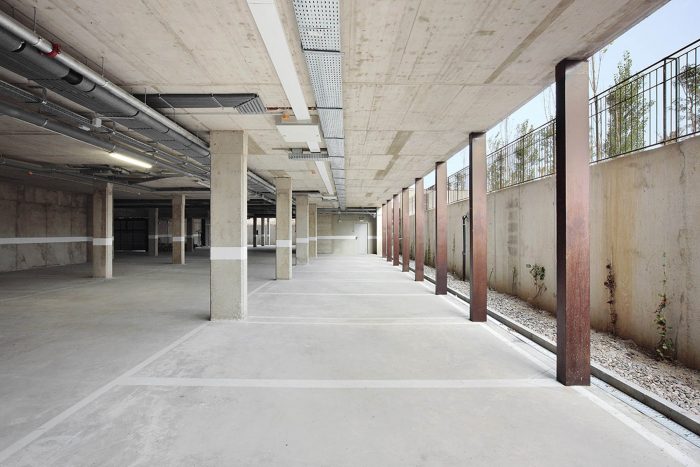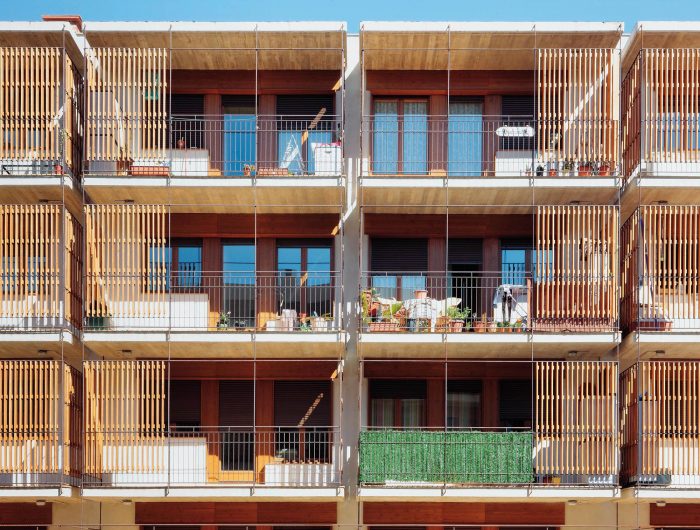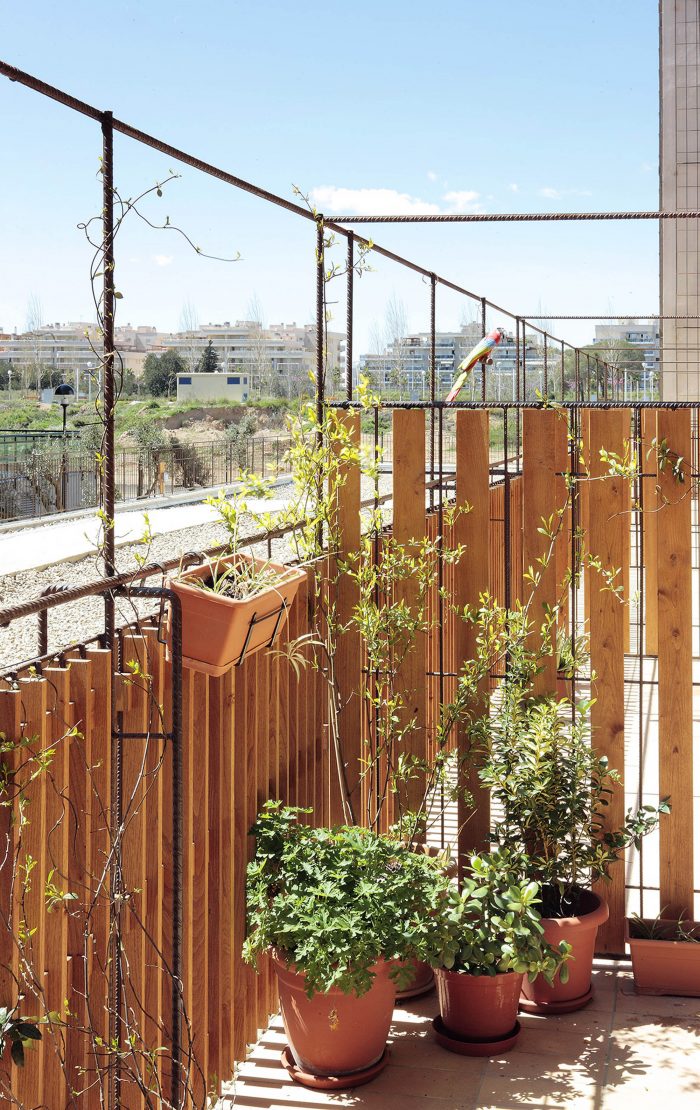萨卢是塔拉戈纳南部加泰罗尼亚海岸的一个市镇。在离海岸线25公里的地方,平行出现了普拉德山,山高1.000米以上。当来自海洋的水蒸气遇到这些山脉时,它被迫上升,失去温度并凝结成降水。水通过山脉的陡峭斜坡下降;它通过一些山谷来调节速度,并再次被分配成不同的水流,流向大海,覆盖肥沃的平原。利用地形,这种周期性的循环成为该地农业生产的特点。因此,这种景观沿着领土延伸,它所提供的资源,通过在不同范围内赋予其意义,对其进行调整和解释。
Salou is a municipality in the Catalan coast of the South of Tarragona. 25 km far from the littoral zone emerges in parallel the Serra de Prades, with hills above 1.000 meters high. When water vapour coming from the sea meets these mountains it is forced to rise, losing temperature and condensing into precipitation. Water descends through the mountains’ steep slopes; it regulates its velocity passing across some valleys and is distributed, once more, into different torrents towards the sea, which cover the fertile plain. Profiting from orography, this periodic cycle has characterized agricultural production of the site. As a consequence, this landscape extends along the territory with the resources it is provided, which it adapts and interprets, by giving sense to that in different scales.
农业模式的逻辑及其与自然循环的互动与城市增长模式的抑制形成对比。从他们的观点来看,领土是一个有待建立的物理空间,而形式上的结果通常是对强加的处置作出反应。委员会之前的竞争要求设计80个社会住房公寓,位于萨卢的最北部。最初被认为是一个新的城市网状结构,在原有的农业地块上脱颖而出,新的地方起源于宽阔的分配地,包含孤立的房屋,正交排列。
规划规则在其中一块地的角落里定义了两个平等的区块,它们必须与新公园接触。每个区块的面积为15×52米,并在内部部分实现了有利的阳光导向。
考虑到以前的前提,质疑多孔性和与环境互动的概念,并选择一个更不渗透的领土,允许快速的城市增长,该提案想知道中间空间,过渡,门槛…像一座桥梁或链接,以建立连续性和不停滞,试图在概念上打开不同现实之间的限制。
The logic of the agricultural model and its interaction with natural cycles contrasts with the inhibition of urban growth models. From their point of view, territory is a physical space to be established, and the formal result usually responds to an imposed disposition. The competition before the commission asked for a design of 80 social housing apartments located in the extreme North of Salou. Originally thought to be a new urban mesh which stands out on pre-existing agricultural plots, the new place originates from the wide allotments that contain isolated houses, orthogonally arranged.
Planning rules defined two equal blocks in the corner of one of the plots which had to be in contact with the new park. Each one of the blocks occupied an area of 15×52 meters and accomplished favourable solar orientation in the interior portion.
Taking into account the previous premises, which question concepts of porosity and interaction with the environment and opt for a more impermeable territory that permits a quick urban growth, the proposal wonders about the intermediary spaces, the transitions, the threshold… like a bridge or a link to establish continuity and no stagnation, trying to open significantly and conceptually the limits between different realities.
因此,该项目提出了一个具有不同干预规模的模式,通过建立一个被认为是支持和接近用户现实的建筑,发展其关系属性的社会住房计划。
所有四层楼的建筑每层都有十套公寓,因此其中三套转向背面,其他七套与街道对齐。因此,街区被分为两部分,它设计了住宅区的角落和内部与外部之间的关系。
一个微弱的斜坡将底层与地形分开,允许自然光和空气进入停车区。在这个斜坡和金银花覆盖的地面上,种植了一片杨树林,这样在夏天,它可以提供一个避开西方阳光的庇护所,同时允许该地区习惯性的米斯特拉尔风吹拂,以冷却气氛。
Consequently, the project proposes a pattern with various intervention scales, with a social housing program which develops its relationship proprieties, by building an architecture thought as a support and close to users’ reality.
All four-story buildings contain ten apartments on each floor, so that three of them turn towards the backside and the other seven are aligned with the street. As a result, the block is divided into two parts and it designs the corners and the relationships between interior and external sides of the housing estate.
A faint slope separates the ground floors from the terrain, permitting the entrance of natural light and air in the parking area. In this sloping and honeysuckle covered floor a poplar grove is planted, so that, during the summer, it can provide a shelter from the sun of west while allowing the habitual Mistral wind blows in the region to cool the atmosphere.
同时,入口和社区空间被认为是关系空间,是住宅和外部空间的中间地带。因此,我们可以把人行道想象成一个过渡元素,在这里,波纹钢网可以满足项目的需要(栏杆、花架、阳台、逐滴灌溉……),其密度有高有低,允许蔬菜种植,加上杨树,以刷新一些空间,在温暖的季节,它们的方向会更受赞赏。
通过只提供一种类型的住宅来优化预算,这些住宅围绕着一个集中了湿润区域和装置的中央空间而衔接。这些住宅随后被分为两个不同的部分:1)入口、厨房、餐厅、客厅;2)两间卧室和浴室,包括洗涤区。
At the same time, entries and community spaces are perceived as relationship spaces, intermediate zones between the dwellings and the external space. Therefore, we can conceive the walkway as a transition element, where a corrugated steel mesh responds to the program needs (railings, trellis, balconies, drop by drop irrigation…) with more or less density, allowing vegetable colonisations coupled with poplars in order to refresh some spaces which will be more appreciated for their orientation in the warm seasons.
The budget is optimized by presenting only one type of dwelling, which is articulated around a central space where wet areas and installations are concentred. These dwellings are subsequently divided into two different parts: 1) entry, kitchen, dining room, living room and 2) two bedrooms and bathroom including the washing area.
这是一个利用两个相反方向的公寓,它概述了一个横向的空间序列:走道、房屋和露台,提供了与使用和气候环境相关的多功能性和适应性。这些空间之间的过渡考虑了它们自身在空间、光线和温度方面的条件。因此,我们认为住宅是多孔的和通过的,是协调私人和公共外部空间之间关系的一个元素。它由人行道上的小孔组成,这些小孔可以调节空气、光线和控制视野;一个朝向露台的更大的开口,由三个部分组成:一个台阶、一个长凳和一个护栏,允许支持桌子的两个可能位置。露台延伸了房子的空间,提供了阴影和透明性,暗示了一些被动的气候控制系统。
最后,该方案是用简单、经济和低维护的材料以及仔细的布局和执行来建造的。材料被展示出来,并响应任何特定的功能,能够随着时间的推移同步发展,根据建筑条件和接受生活的力量,意外成为习惯,比任何预期的规划更占优势。
It is an apartment which takes advantage of two opposite orientations and it outlines a transversal sequence of spaces: walkway, house and terrace that provide versatility and adaptation tied to the use and climatic circumstances. The transition between these spaces contemplates their own condition regarding space, light and temperature. Consequently, we consider the dwelling to be porous and passing, as an element which coordinates the relationship between private and public external spaces. It consists of smaller holes in the walkway which canalize air, light and which control views; a wider opening towards the terrace, consisting of three parts: a step, a bench and a parapet which permit a support of two possible positions of the table. The terrace, which extends the space of the house, provides shadows and transparencies suggesting some passive systems of climatic control.
Finally, the proposal is built with simple, economic and low-maintenance materials and a careful disposition and execution. Materials are shown the way they are and respond to any specific functions, being able to evolve synchronically as time goes by, according to architectural conditions and accepting that life power, the unexpected that becomes habitual, prevails more than any expected planning.
建筑师:Toni Gironès
面积:8672 m²
年份:2009年
照片:José Hevia, Toni Gironès
工程师结构:Xavier Saura
技术建筑师:Brufau I Cusó S.L.P
施工单位:Tarraco Empresa Constructora S.A
城市:萨卢
国家 : 西班牙
Architects: Toni Gironès
Area: 8672 m²
Year: 2009
Photographs: José Hevia, Toni Gironès
Engineers Structures:Xavier Saura
Technical Architects:Brufau I Cusó S.L.P
Constructor:Tarraco Empresa Constructora S.A
City:Salou
Country:Spain























